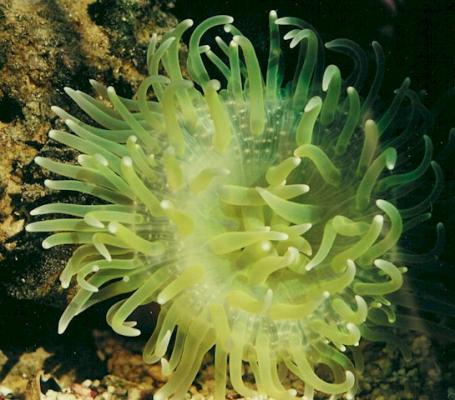Kwazulu NatalThis is probably the most popular diving and snorkelling destination in South Africa, as it is home to some of the most southerly coral reefs in the world! The immense variety of tropical reefs, ship wrecks and an absolutely stunning variety of sea-life come thanks to the warm Agulhas current that flows down the coast. This allows the tropical reefs to flourish and the water seldom drops below 20 C, summer or winter.
The most popular site is Sodwana Bay, situated in the northern region of the province. Over 1200 species of fish have been identified here. Sodwana Bay offers awesome snorkelling all year round but the best conditions are the warm summer months from November to May.
On the Kwazulu Natal South Coast, Aliwal Shoal, Landers Reef and Protea Banks are the main diving and snorkelling sites. Aliwal Shoal is just a 40 minute drive south of Durban. The shoal comprises of a variety of sponges, soft and hard corals and a union of warm water reef fish and cold water fish.
If you'd like to snorkel with ragged tooth (grey nurse) sharks and a whole host of other sharks though, including great whites, tigers, Zambezis (bull sharks) and hammerheads, there is very little to beat the very deep Protea Banks.
The diving in
Durban itself is not bad but the visibility is usually less than the North or South Coasts. Durban's big plus is that
uShaka Marine World, which offers the usual scuba dives in the predator tank, also has a snorkelling pool for kids of all ages.
Western CapeCape Town is a great snorkelling destination, but it's not for the faint-hearted. The water is cold (10-17C), the visibility is very seldom over 10m and the entries and exits can be rather adventurous. But it's worth it. There are no pretty tropical fish but the invertebrate life is far more colourful and varied than that found on coral reefs.
It also has the most beautiful and mystical kelp forests. Mysterious wrecks, sharks, whales, penguins and awesome fish can also be seen. The best part about the Cape area is that it's always diveable - when the sea on the western side of the peninsula is too rough, False Bay will be beautifully calm, and vice versa.
There is some good snorkelling in the rather chilly
Langebaan Lagoon, and in the calm, cold waters off the Cape Columbine Nature Reserve. Most people, however, only put their heads underwater here to take out crayfish - on snorkel, and with a permit.
Snorkelling on the Garden Route is very similar to snorkelling in Cape Town, except that there is no kelp. The fish here, like further west, are more of the red and silver variety than brightly coloured tropicals, but the invertebrate life is every bit as colourful, with sponges, anemones, nudibranches and more. There are also some mystical ship wrecks and awesome coral reefs to explore. The main diving areas on the Garden Route are
Mossel Bay,
Knysna,
Plettenberg Bay and at
Tsitsikamma National Park.
Eastern CapeIn the Eastern Cape, the water is noticeably warmer and clearer and you will find phenomenal vagrant tropical species. In the Nelson Mandela Bay (
Port Elizabeth) there are great snorkelling spots, especially at the old pier where a whole range of fish species, jellyfish and octopus can be seen.
LicencesA licence is needed to take out crayfish or lobster while snorkelling. These licences are available at any post office or conservation office. The snorkeller needs to acquaint himself with the relevant regulations regarding the licence purchased.



